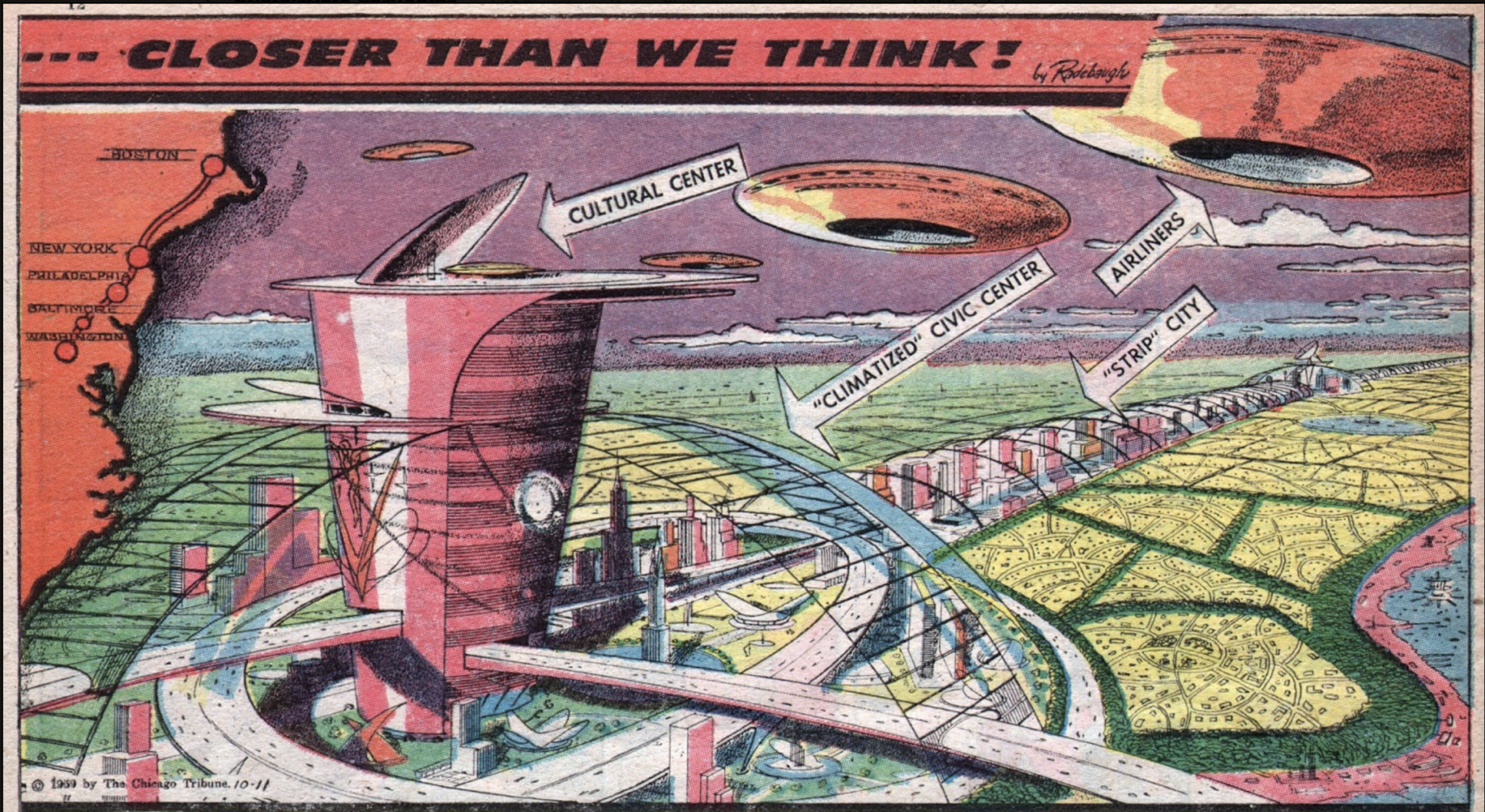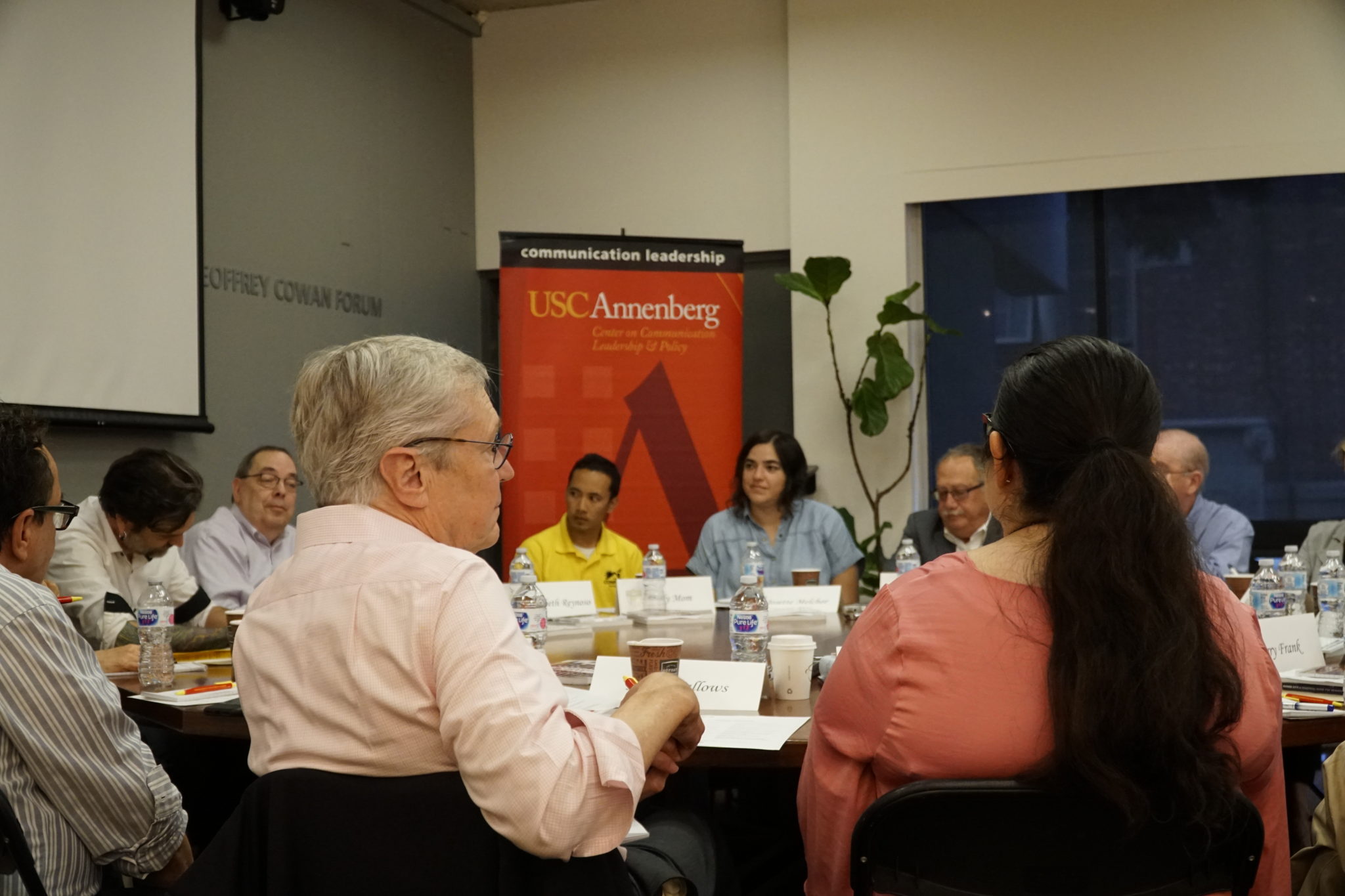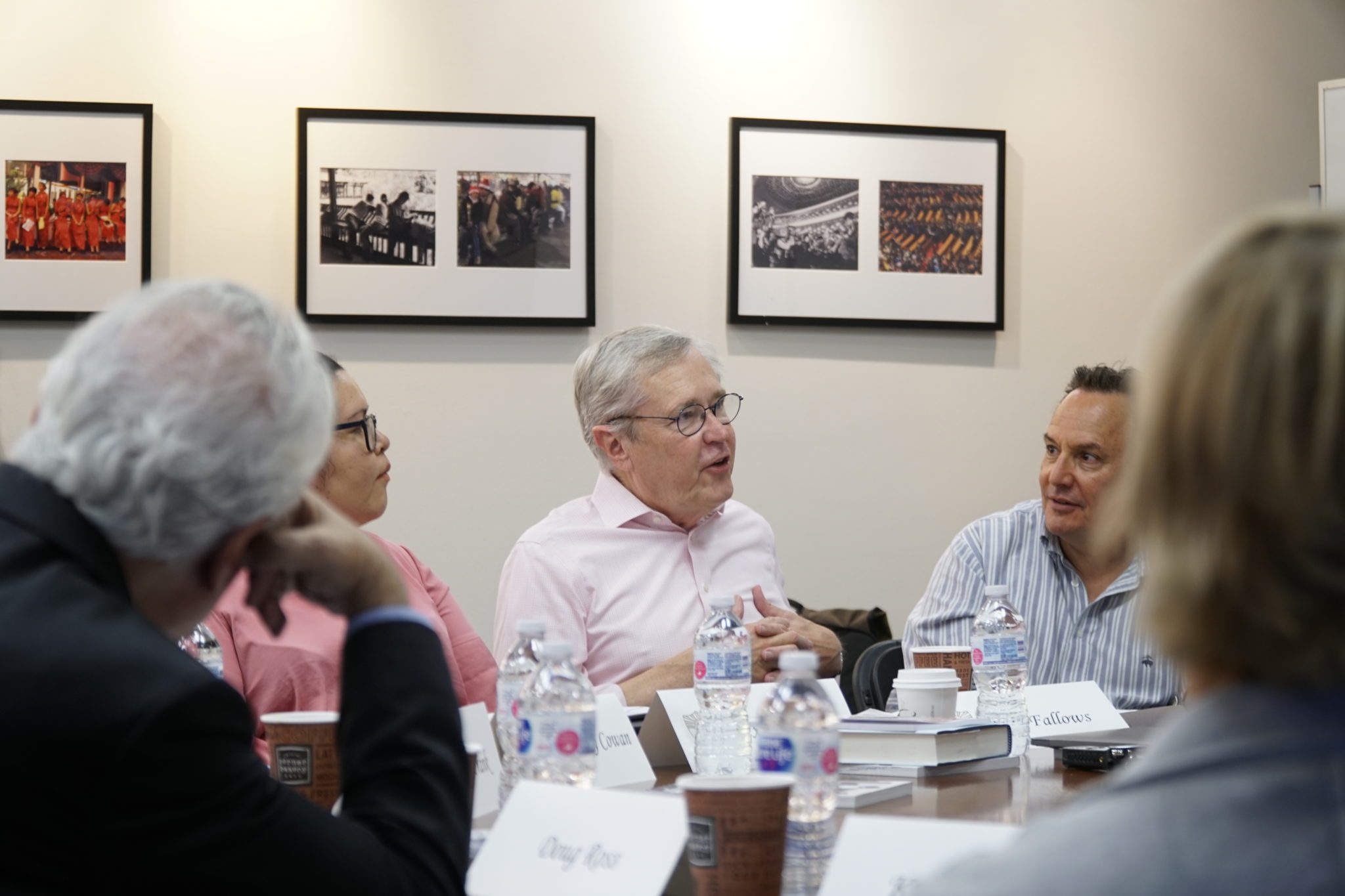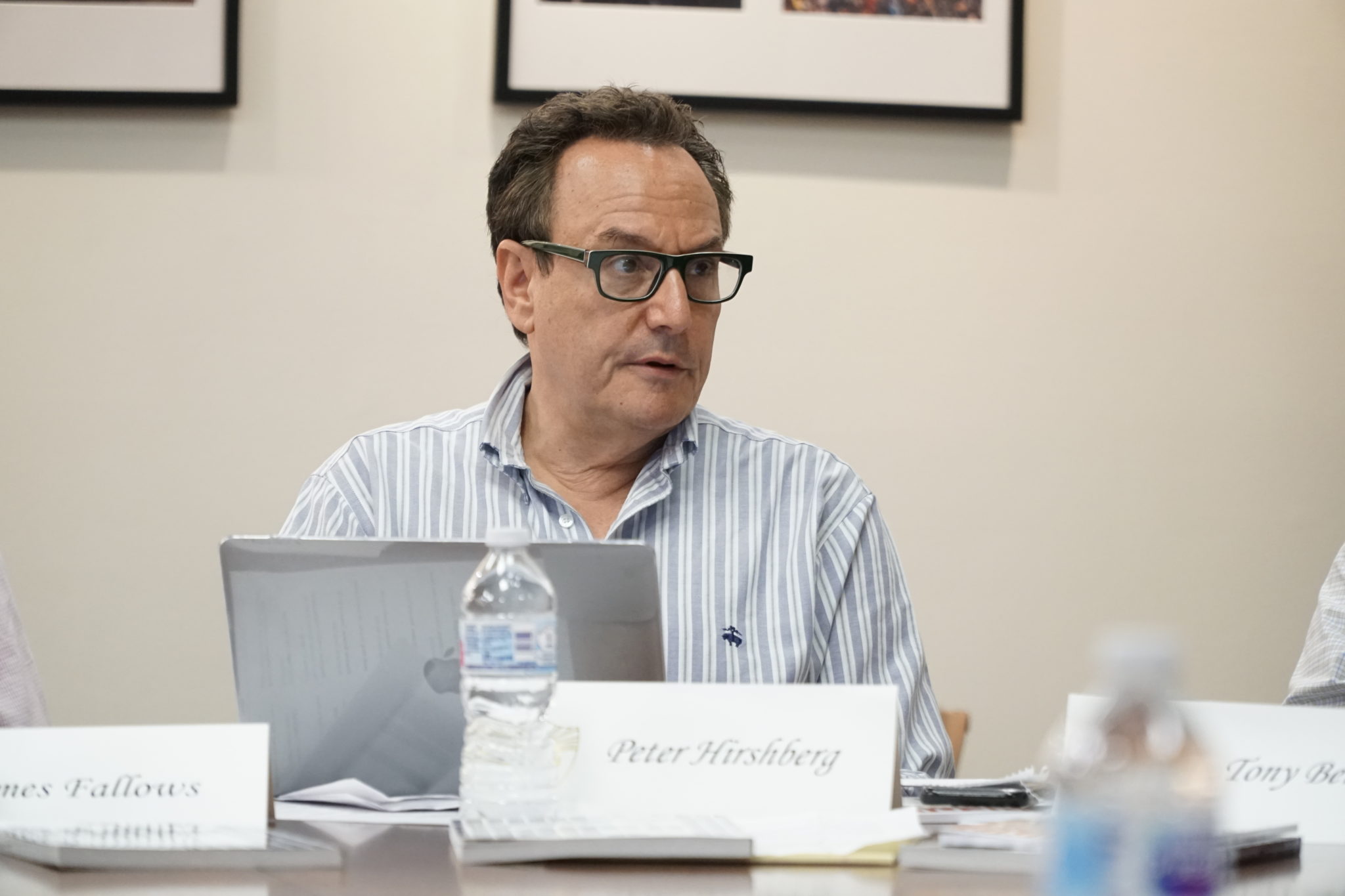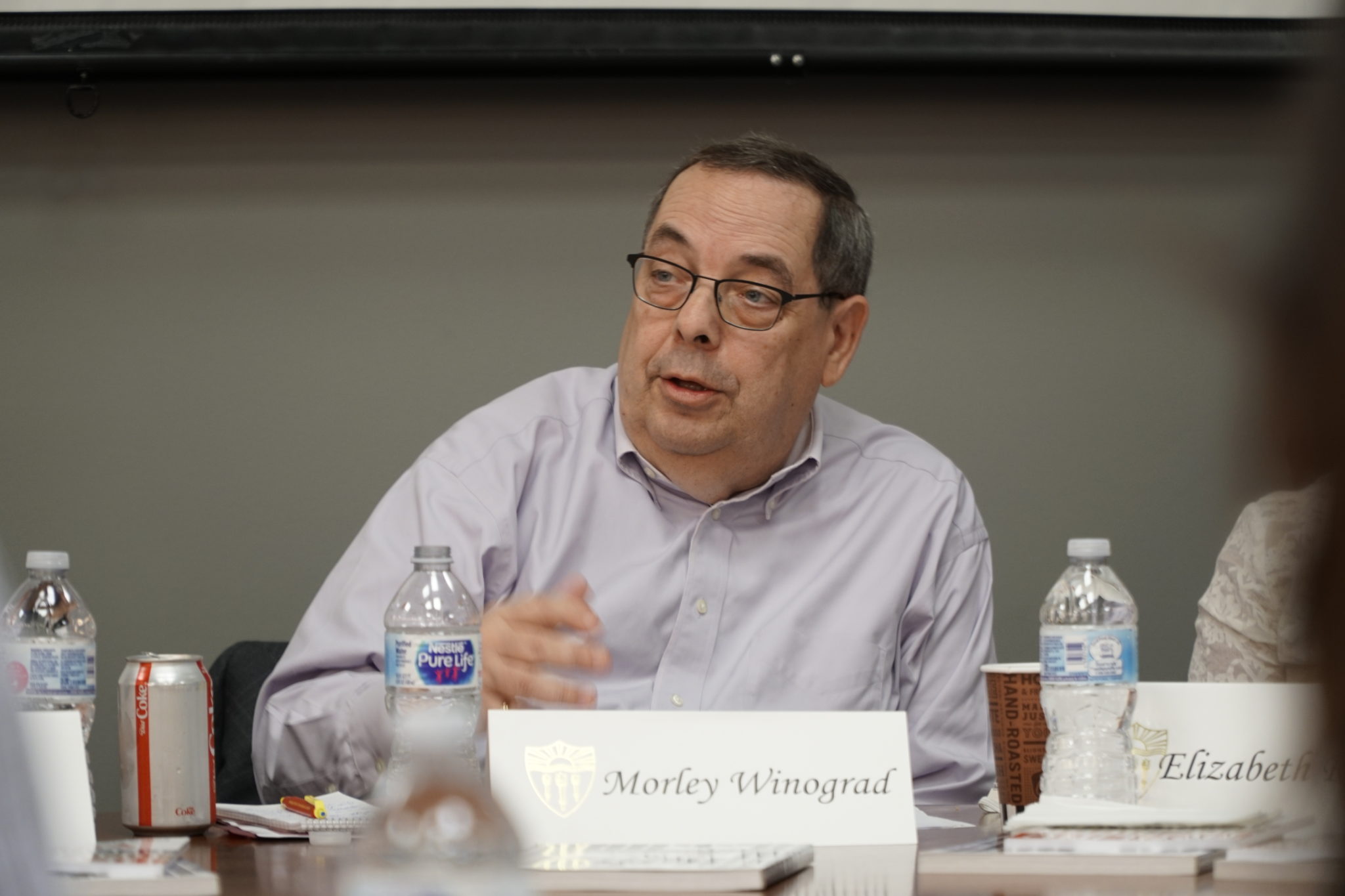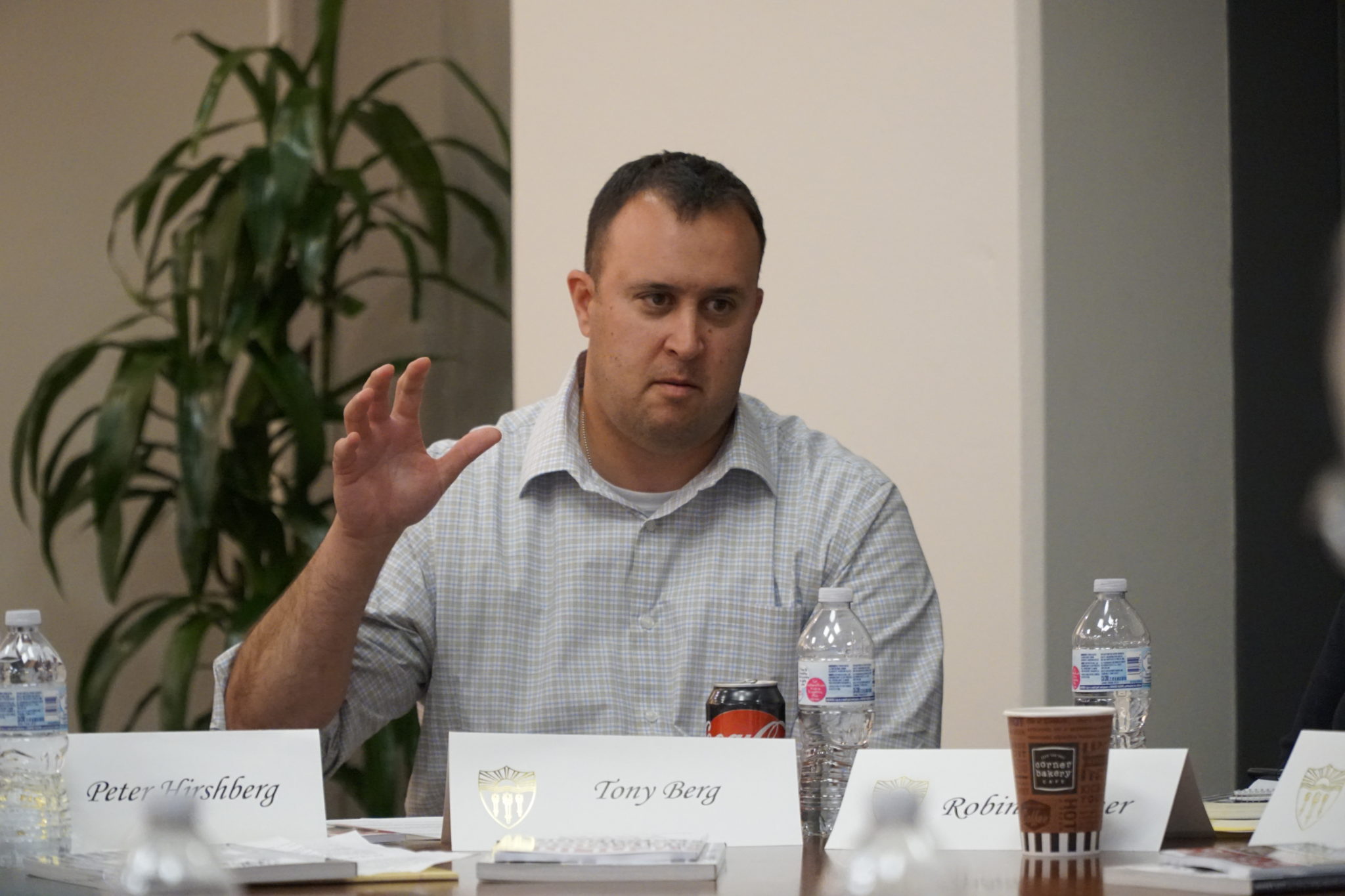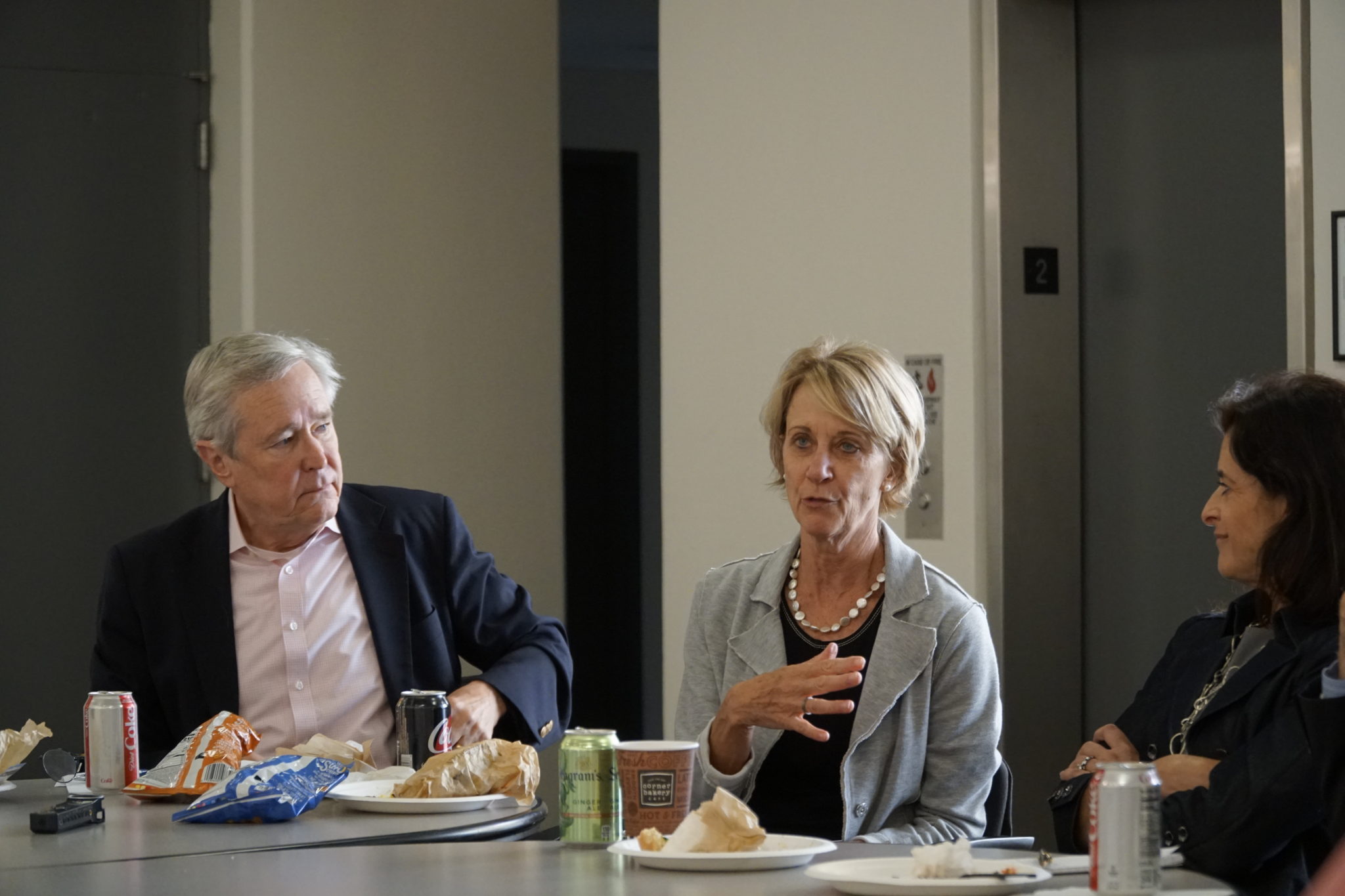In the past four years, we’ve been inspired by how localism – the movement in cities and towns to drive civic engagement and inclusive economic development – has ignored the national climate of dysfunction and pessimism, and made real, tangible progress across America. At first, the national discourse in turn ignored localism; it was little more than a glimmer of hope on the horizon, at time when hope was hardly in fashion. But now, with the 2018 midterms behind us and the 2020 presidential race ahead, localism is rapidly gathering momentum and dimensions, raising broad institutional support and awareness.
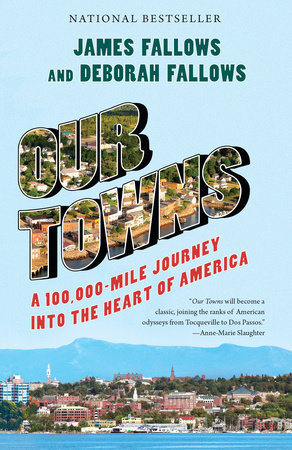 No one has been watching this more than our friend Jim Fallows, who joined us at the USC Annenberg Center on Communication Leadership & Policy (CCLP) in October, 2018. At the CCLP conference, titled “Localism: Building America From the Bottom Up,” we explored how a range of innovative institutions in cities all over the country – the press, libraries, museums, schools, and economic development organizations – are reframing the American narrative, rejecting the polarized national dialogue in exchange for collaboration, inclusion, and a determination to try things out and get things done at the local level. Jim and his wife Deb were co-hosts and lunch speakers; their 2018 book, Our Towns: A 100,000 Mile Journey Into the Heart of America (already a national best-seller, it’s out in paperback on February 5th), chronicles the small-town reinvention they’ve witnessed first-hand all over the country.
No one has been watching this more than our friend Jim Fallows, who joined us at the USC Annenberg Center on Communication Leadership & Policy (CCLP) in October, 2018. At the CCLP conference, titled “Localism: Building America From the Bottom Up,” we explored how a range of innovative institutions in cities all over the country – the press, libraries, museums, schools, and economic development organizations – are reframing the American narrative, rejecting the polarized national dialogue in exchange for collaboration, inclusion, and a determination to try things out and get things done at the local level. Jim and his wife Deb were co-hosts and lunch speakers; their 2018 book, Our Towns: A 100,000 Mile Journey Into the Heart of America (already a national best-seller, it’s out in paperback on February 5th), chronicles the small-town reinvention they’ve witnessed first-hand all over the country.
Jim and Deb started their journey in 2014, when the stories they were unearthing seemed like quaint one-offs; their narrative “didn’t quite fit” with the country’s growing image of dysfunction following the 2008 crisis, which only became more entrenched after Trump was elected. As Jim kept digging deeper into localism, publishing a feature for the Atlantic in 2016, even the movement’s greatest proponents warned the positive narratives in America were isolated and faint compared to the national media diatribe. At the time, Philip Zokolow, professor at the University of Virginia and a director of a seminal Markle Foundation initiative called “Rework America,” said:
“In scores of ways, Americans are figuring out how to take advantage of the opportunities of this era, often through bypassing or ignoring the dismal national conversation. There are a lot of more positive narratives out there—but they’re lonely, and disconnected. It would make a difference to join them together, as a chorus that has a melody.”
Speaking at the October 2018 Annenberg CCLP conference, even Jim Fallows was surprised at the scope and scale of localism developments, and how much had changed in just under three years. Those quiet notes of hope in forgotten small towns have grown into a symphony of widespread institutional change in America. Earlier this month, despite the national chaos culminating in the government shut-down, Jim saw fit to add to this hopeful narrative. His January 2019 post in the Atlantic, part of an ongoing series to capture the thrilling pace of progress, identifies a growing trend of structural improvements, marked most notably by the 2018 midterms, which signaled a nation-wide move toward “improvements in the machinery of governance at the local and state level.” He’s also aggregated stories of progress at the state and local levels, including former CA governor Schwarzenegger fighting for anti-gerrymandering measures, and the town of Gonzales finding new ways to empower its citizens.
A theme at our conference in October was how localism might be a path out of the political divide nationally – indeed, Morley Winograd, who hosted the event with Peter Hirshberg of Maker City, is the co-author of a book on this subject called Healing American Democracy: Going Local. In Jim’s January 2019 piece, he also writes about how the left and right are now starting to find hopeful, and complementary, approaches to localism. Lenny Mendoca, the former head of CalForward and now the newly-appointed chief economic advisor to California Governor Gavin Newsom, identifies a movement of “progressive federalism” galvanizing the left towards higher, and more inclusive aspirations than pure anti-Trumpism. On the right, Andy Smarick of the libertarian R Street Institute posits in National Affairs that a goal of “real decentralization” means conservative leaders must be comfortable adopting initiatives they may not agree with: “By recognizing our own limitations and the authority of others, we can see that the American unum requires a pluribus.”
Another theme discussed at USC in October was how journalists should cover localism. For one thing, how might a news organization focus on the localist reinvention story without getting sucked into the polarized national argument? Tony Berg of The Kansas City Star said that nationally, “You can’t win: there’s a divide now where if you pick one side, you’re biased; if you pick the other, you’re on their side.” So The Star, like many other regional papers, has doubled down on its local coverage and is trying new approaches with exciting results: last month, Dan Gillmore wrote about The Star’s success partnering with libraries to increase its transparency and engagement with local residents. Maker City has just announced a partnership with The Star to highlight the region’s entrepreneurs and civic innovators, among other experiments involving the Kansas City community in “making” the news.
A second journalistic concern was, how does a reporter who wants to herald localism, and serve as a force to catalyze reinvention, get around the problem of seeming (as Jim Fallows put it) like a “sap”? At USC, Fallows introduced the idea of “conditional optimism,” to balance the tendency of news outlets to avoid stories that place risky bets on hopeful outcomes. Coming from Silicon Valley, we believe that journalists writing about local issues can take a page from the tech journalism handbook. Every new start-up is the “next big thing,” until it isn’t; good tech journalism applies a practical lens to entrepreneurial bluster, analyzes the core idea, puts it into context, and tries to determine how it might scale. Coverage of local experimentation and innovation is wisely beginning to apply similar tactics.
In October, Jim and Deb concluded that their next step after publishing their book wouldn’t be to start a new organization – they realized that there already were so many. Instead, they would help reinforce the rising tide of localism, continuing to connect the growing number of stories of institutional change. And this week, a stunning One More Thing: early in this 2020 presidential season, we have up to five mayors or former mayors running for president! Writing in the Philadelphia Citizen, Bruce Katz, author of The New Localism, suggests this is not so much a “more horses in the horse race story,” but rather about a whole new class of candidates, all of whom speak in powerful, practical localist terms about what works now and what to invest in – and how to elevate the best ideas to the national level. Katz is particularly excited about how mayors and cities are applying the Opportunity Zone investment legislation to the reinvention of our cities and towns.
A friend who works at the World Economic Forum actually called the candidacy of Mayor Peter Buttigeg of South Bend “ridiculous” and “embarrassing” in a Facebook post, complaining he is from a city of “just over 100,000” (in Trump country). We had to point out that these are exactly the voices America wants to hear from: not more of the coastal elites, but the leaders advocating for progressive, inclusive, and practical solutions on the ground, building pride in their towns alongside economic development. Mayors have to be operational and non-dogmatic; we absolutely need them to join the conversation about our country’s future.
Four years after Jim Fallows started gathering lonely stories of local progress, we see institutions all around us finding new roles and trying new forms of governance. America is a large and changing country, but in localism, we see evidence that it hasn’t lost sight of its original notion of federalism and diversity – in fact, it’s as if America is starting to remember that its original ideas were its best ones, well worth reviewing and applying to the challenges of today. Onwards to 2020.


